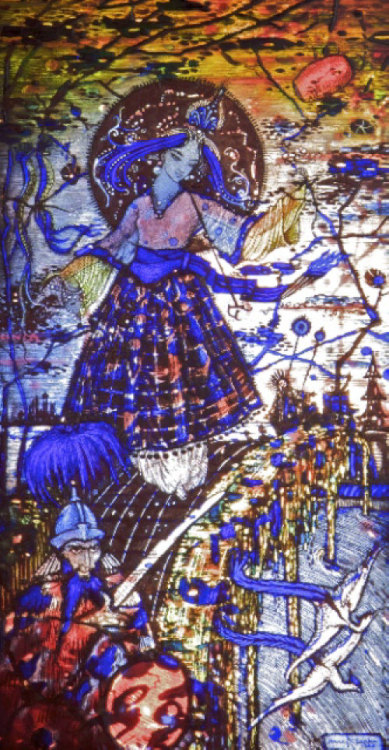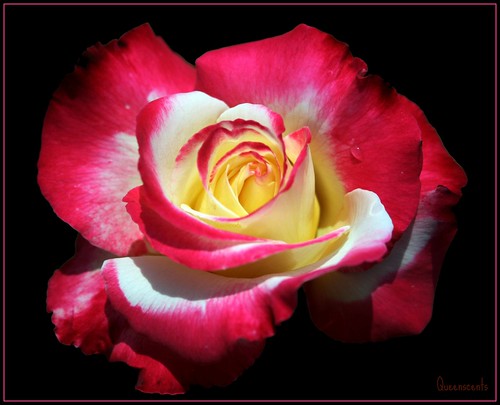If you want a book that's not too long or academic but still gives you plenty of food for thought, read
Fairy Tales: A New History by Ruth B. Bottigheimer. This book challenges the commonly accepted notion that fairy tales have an oral history, but instead have a history that can be traced back through published books.
Bottigheimer goes in reverse chronological order, exploring the roots behind the major fairy tale publishers, proving that the roots of their fairy tales were really a previous collection of published tales, not actual peasants. First she started with the Grimms. I actually found this section to be a little frustrating. If you've read anything about the Grimms published recently, it's common knowledge that their informants were their middle class family friends and not actual German peasants. I've posted on John Ellis'
One Fairy Story Too Many, which is the book that really first revealed to the English speaking world the truth about the Grimms' collection, but other books published since then seem to give the impression that they're the first to deliver the shocking news and it gets a little tiring when each author claims to be the one exposing the shocking truth. Bottigheimer spends too much time giving you the false scenario which is "commonly believed" about the Grimms traipsing through the German countryside and searching for tales, which gets old and comes across as a little condescending to the reader. It almost weakens her arguments, because few people, especially today, believe this given scenario exactly, so it sets you up on the defensive rather than being receptive to hearing what she has to say. Even before Ellis, not everyone was completely ignorant-in my
last post, I shared what Sokolov published in 1950-that it would be foolish to assume that the tales originated from the people as a whole and obviously had an author at some point.
I enjoyed the other sections more. As I've lamented about before, if my library is any indication, books about the Grimms are plentiful, but reading about Perrault is limited to chapters in other books, and it's virtually impossible to read about Straparola and Basile without spending a fortune on more obscure books, so I was very interested to read about them. (But for the dedicated, the wonderful Heidi Anne Heiner of
Surlalune has a
Basile's Pentamerone page and a
Straparola's Facetious Nights, where the tales are available to read in full text! I have determined to read more of them...) Basically, in the timeline of published fairy tale collections-Straparola in the 1550s, Basile in the 1620s, then Perrault (and Lheritier and others) in France in the late 1600s/early 1700s, and finally Grimms in 19th century Germany-for each major collection, the previous collections were in print, widely circulated, and translated into multiple languages, so that each author was aware of the tales of the other authors and intentionally (Basile, the French authors) or unintentionally (Grimms, who may have been somewhat deceptive but really did think they were preserving the German tradition in their tale collection) created their own versions of the previously existing stories in their own collections. Bottigheimer provides examples of the tales that evolved under each author's pen, from the well known (Sleeping Beauty) to the obscure. Even Straparola's were based off of previous story collections, but Bottigheimer also makes a very bold claim: "It was Giovan Francesco Straparola who created rise fairy tales."


Giovan Francesco Straparola
Giambattista Basile

Bottigheimer defines rise and restoration fairy tales, which are very helpful terms when categorizing: a rise tale is one in which the protagonists begins in poverty and acquires a royal spouse and wealth through magical means. A restoration tale features a character that begins in an elevated state, is brought low through some humbling circumstance, and rises back to power and wealth at the end-for example, Donkeyskin, who begins as a Princess, is forced to make herself ugly and work as a servant because of her father's incestual passions, and ends up as a rightful princess. Some longer fairy tales may be a rise and a restoration within the same tale. These terms can help us understand the history of a tale and how it is created to meet the demands of the audience-Straparola's tales were written in Venice at a time when there was lots of poverty, and naturally the poor would be enticed by a rise tale, and his collection featured many rise tales. Yet Basile wrote his tales for the upper class, who dispised the poor, and in his collection, "the vulgar masses are rejected and depicted as repellent." There are a few rise tales in his collection, but Bottigheimer tells us they are rare exceptions. Yet restoration tales abound, which is something his audience can relate to.
According to Bottigheimer, "dig where we may, no rise fairy tales can be found in layers of literary remains before Straparola." Yet what about the ancient Chinese tale of
Sheh Hsien, from the 8th century, which features a poor mistreated girl, forced to do all the work, who with the help of a magic fish acquires beautiful clothes and gold shoes, with which she was discovered by the King, who married her? How is this not a rise tale? Bottigheimer doesn't mention this version of Cinderella.

Here's where things get sticky-Bottigheimer states that, though many motifs common in fairy tales may have been around since antiquity, Straparola was the one who really created the genre. Yet you really have to look at the history of each tale itself. Beauty and the Beast is usually traced back to the myth Cupid and Psyche. Yes, Cupid and Psyche is a myth and not a fairy tale, but it is still part of the history of the story-drawing lines to define genres can be helpful but doesn't give us the full picture.
Bottigheimer's implication is that, in creating the rise fairy tale, Straparola created the genre we know of as fairy tales, but what about fairy tales that aren't rise tales or can't be necessarily traced back to Straparola?
Surlalune traces the Frog King back to the 13th century, as well as a Scottish version from 1549, both before Straparola. What about those tales that don't even necessarily end happily, such as Swan Maiden tales? While we now create categories and criteria, the tellers of the tales most likely didn't distinguish between rise and restoration tales, fairy tales or tales about fairies, but simply told stories. While I think most people, even those writing on fairy tales, underestimate the significance of Straparola and Basile and published books in the history of the tales, you can't say
everything started with Straparola. But certainly fairy tales as we know them would be significantly different without him.
Illustrations of Cinderella and Beauty and the Beast by Warwick Goble



























